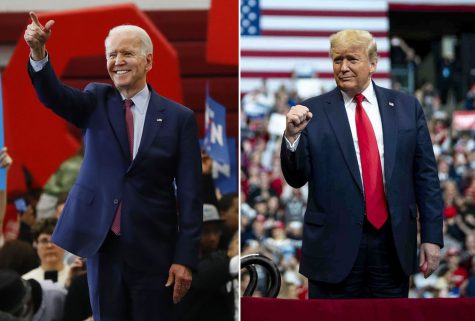Korean Peninsula Peace Agreements
For the first time since becoming two separate nations, a North Korean leader has stepped into the country’s closest neighbor and longtime enemy: South Korea. Meeting at the border village of Panmunjom in South Korea, Kim Jung-un crossed the border and met South Korean president Moon Jae-in with a handshake to begin the monumental visit.
To make the visit even more shocking, Kim Jung-un and Moon Jae-in have made the decision to work together to begin to denuclearize the Korean Peninsula. For the past year, threats of nuclear war have been hanging over the entire world, with growing tensions between North Korea and the United States primarily; President Trump even going as far as to call Kim Jung-un ‘Little Rocket Man’ on Twitter.
Per South Korean leaders, a USB flash drive was given to Kim Jung-un by Moon Jae-in, containing a map of charts and graphs for a better Korean Peninsula, rendered only possible by North Korea laying down their nuclear weapons. This practice seems unusual without context; for years, the North has been restricting similar flash drives from being brought into the country, worried the contents could be used to brainwash civilians against the government with K-Pop music or South Korean ideas.
After such promising conversations and the planting of a tree together, many feel this is the end of the decades-long Korean War, and the potential beginning of peace negotiations with North Korea to soften their nuclearization. For many, however, this façade of togetherness and working together to better Korea could be gone in the blink of an eye.
But when and why did the Koreas become two different nations in the first place?
The Koreas initially split at the end of World War II following the dismantling of the Japanese Empire. The peninsula was then cut almost in half at the 38th parallel, with the south ultimately going under a sphere of influence from the Americans and the northern portion becoming communist under Russian rule.
Five years later, North Korea launched a surprise attack at South Korea and took most of the land south of the parallel. From there, the United Nations immediately condemned the attack and backed the South, thus beginning the Korean War.
Over the next three years the Korean War was fought, land advancements were made and lost, and 2.5 million soldiers were killed. The armistice to stop the fighting was signed in July of 1953, ending the territorial dispute and placing the border right where it started in the first place: the 38th parallel.
Following the war, South Korea prospered under capitalist dictatorships until eventually becoming a democratic state known for Korean pop music and a love of tourists. North Korea, however, has been ruled by the Kim family for three generations under harsh, totalitarian rule and has remained isolated from most of the rest of the world.
The two nations have remained separate, with tensions high and little communication until only recently. This lack of communication between one another comes from North Korea’s rapid nuclearization, which the South does not agree with. However, at the 2018 Pyeongchang Winter Olympics, North Korea sent a team of athletes into South Korea, with a joint hockey team playing together as well.
In the past few months, the world has gotten to watch as the two ‘sister nations’ slowly have begun to have negotiations and set aside their differences to bring together a united peninsula once again. In a shocking decision, North Korean officials have also said they plan on destroying the nation’s only-known nuclear test site on May 23rd, weather permitting. The country, however, has not promised to get rid of or shrink the weapons arsenal.
The idea of a world where North Korea makes peace with others and lays down their nuclear weapons seems to most like an unlikely dream; but for some, this dream may be taking reality soon enough. With these most recent peace talks, many feel this is the start of a new era of harmony on the Korean Peninsula.
Update: In the wake of joint military drills between South Korea and the U.S., North Korea has cancelled its upcoming meeting with South Korea. North Korean officials have said the drills are a ‘provocation’ and ‘preparation for attack’. This announcement comes just a month before the summit between Kim Jung-un and President Trump, which North Korea has also threatened to cancel. There’s no word on whether the meeting will be rescheduled or not.






